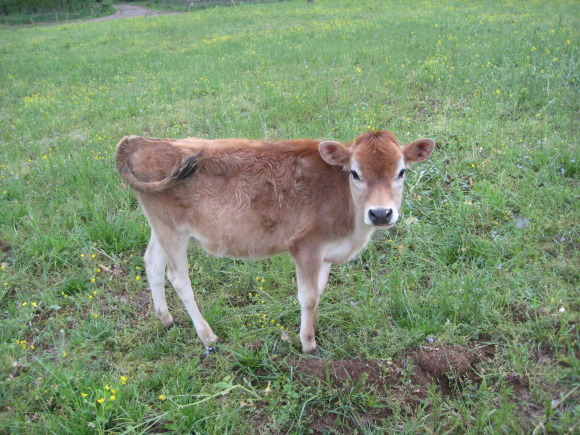What's Little Seed All About?
Inter-Dependency & Limited Outside Inputs
We can also say for certain that we will pursue production models that are inter-dependent and rely on as few outside inputs as possible. One example of this is pork production through the use of excess whey from the cheesemaking process. Our goal is to have a 100% grass-fed dairy operation that will supply the milk for our cheesemaking. When cheese is produced from milk much of the protein and mineral content is expelled as whey. This whey is highly nutritious and can be fed to the pigs and constitute a substantial portion of their diet.
In order to further limit the input requirements for raising pigs on pasture we envision planting fields of forage for them to root up on their own. For instance, we may have the pigs in a paddock that we planted with various tubers, root plants, brassicas, grass, etc. We will rotate the pigs through the forage-filled paddocks throughout the year, planting cover crops behind them and eventually returning them back to forage again. The idea is to supply the vast majority of the pigs’ diet through natural production on our farm. This reduces the amount of corn, soy and other feed content that we would otherwise need to purchase and import into the farm (which we view as largely unsustainable in the long-term). It’s a lofty goal for a number of reasons (grass-fed cows produce very little milk, managing natural forages is very difficult (especially through winter), if not impossible, etc), but fools rush in where angels fear to tread, right?
Holistic Management & Ecological Diversification
We plan to farm holistically and organically, which means that we will consider the welfare of the land, the animals and the people in each decision that we make and we will not use manufactured fertilizers, pesticides, hormones, antibiotics or genetically modified organisms in our production. Furthermore, we will encourage nature’s cycles of predation and growth/regrowth, allowing the ecological system to regulate itself as we use systems such as crop rotation, animal rotation and composting to naturally regulate pests and prevent animal disease.
Inter-twining with the idea of co-dependent farm enterprises is the pursuit of ecological diversification of our farm. Our grand dream includes cows, sheep, pigs, chickens, rabbits and more all living in concert with our natural surroundings and the variety of wild game, animals, birds and insects that our property has to offer. A common example of diversification among grass-farmers is the inclusion of birds in the animal rotation. Chickens, ducks and turkeys are given access to pasture where animals have previously grazed. The birds dig and scratch through the fields, foraging fly larvae, worms and other grubs and insects. This provides the birds with a well-rounded diet, allows them to be outside in the sun with plenty of room to roam and results in fewer flies and greater manure distribution with the added benefit of the high-nitrogen manure from the birds. A less well-known example is the relationship between earthworms and the success of the grass-farmer. Earthworms play a critical role in the growth of grasses and legumes in the soil. The worms aerate and mix the soil, converting organic soil matter into humus and improving soil fertility. Providing a habitat where earthworms can thrive is a great example of the “non-productive” ecology that we seek to encourage.
As we progress further down the line we’ll surely adapt to circumstance and improvise where necessary. None of our goals will be immediately achievable, but we will strive to get there over time.
I hope this helps clarify some of our thoughts and gives you a good start in thinking about the environment we hope to create. Life's an open pasture for now, but soon it will be full!



